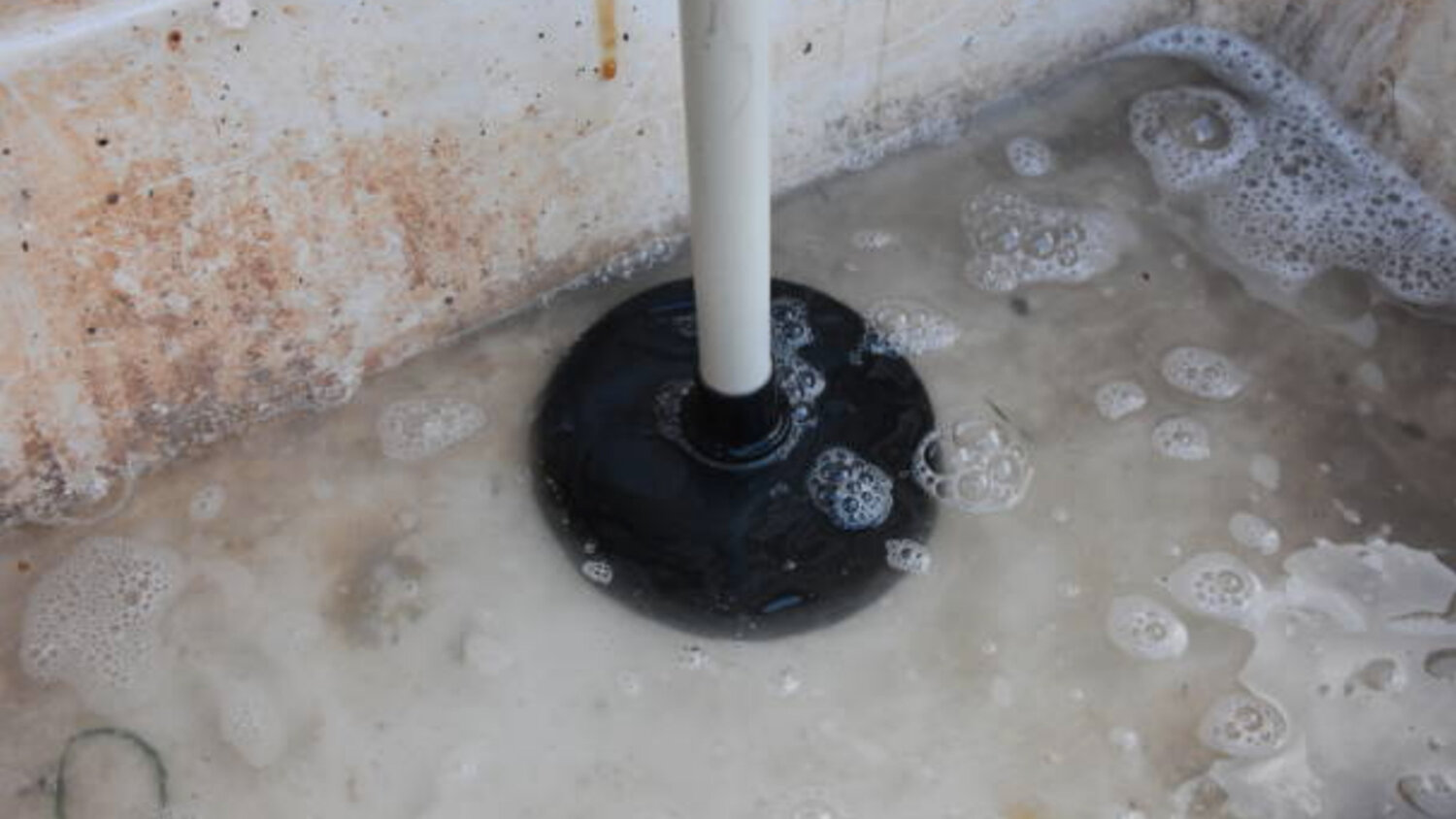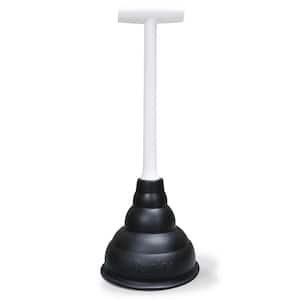Ways to Successfully Utilize Plungers and Drain Cleaners: Expert Advice
Ways to Successfully Utilize Plungers and Drain Cleaners: Expert Advice
Blog Article
What are your beliefs on How To Use Your Toilet Plunger Correctly in 5 Easy Steps?

Intro
Correct upkeep of household drains is crucial for protecting against blockages and guaranteeing smooth water circulation. One of the key tools in every homeowner's toolkit is the bettor, alongside different drainpipe cleaners created to deal with persistent clogs effectively. This write-up checks out exactly how to utilize plungers and drainpipe cleaners properly to maintain your drains moving easily.
Section 1: Comprehending Plungers
Kinds of Plungers
There are numerous kinds of bettors readily available, each designed for different sorts of drains and clogs. One of the most typical types include mug bettors, flange bettors, and accordion bettors.
How Plungers Work
Plungers deal with the principle of creating stress and suction to dislodge clogs. When appropriately applied over a drain, they produce a vacuum cleaner that can pull out debris or break up blockages.
Choosing the Right Plunger
Picking the appropriate bettor relies on the sort of drainpipe and the nature of the obstruction. Cup plungers are ideal for sinks and tubs, while flange plungers are much better fit for toilets due to their layout.
Typical Mistakes with Plungers
Staying clear of these mistakes makes certain efficient plunging: incorrect seal around the drain, not enough force, and unclear surrounding debris.
Section 2: Utilizing Plungers Successfully
Preparation
Prior to diving, make sure the plunger covers the drain completely and creates a limited seal. Clear any type of noticeable particles around the drainpipe opening.
Method
Begin with gentle diving motions to build suction. Rise stress slowly, utilizing a stable rhythm. Repeat as essential till the drainpipe removes.
Repairing Tips
If plunging doesn't work, attempt changing the seal, using petroleum jelly for a much better seal, or using a various type of bettor.
Section 3: Understanding Drain Cleaners
Types of Drain Cleansers
Drain pipes cleaners can be chemical or chemical. Chemical cleaners utilize strong chemicals to liquify blockages, while chemical cleansers use all-natural enzymes to break down organic matter.
How Drain Cleaning Company Job
Chemical cleaners react with clogs to dissolve them, while enzymatic cleaners break down natural materials like hair and oil without hurting pipes.
Safety Considerations
Always put on handwear covers and eye protection when making use of chemical drainpipe cleaners. Make certain ample air flow and adhere to producer directions thoroughly.
Eco-Friendly Alternatives
Take into consideration using vinegar and baking soda or enzyme-based cleaners for green options that are much safer for pipelines and the atmosphere.
Area 4: Making Use Of Drain Cleaners Efficiently
Application Techniques
Put chemical cleaners directly right into the drain opening. Enable them to help the advised time prior to purging with hot water. Enzymatic cleaners need to rest over night.
Precautions
Avoid blending various kinds of cleaners, as this can create harmful fumes. Never ever utilize chemical cleaners in conjunction with a plunger, as spilling can happen.
Dealing With Stubborn Blockages
For persistent clogs, think about using a pipes snake or calling a specialist plumber to avoid damage to pipes.
Final thought
Finally, understanding just how to utilize bettors and drainpipe cleaners effectively is important for keeping healthy and balanced plumbing systems. By choosing the right devices and strategies, house owners can deal with minor obstructions and protect against significant pipes problems down the line.
How To Properly Use A Plumbing Snake To Clear Drains
When any drain clogs in our home arise, we tend to gravitate toward the plunger and little else. In cases where the plunger and its vacuum-created pressure are not able to clear clogs, many immediately move to harmful chemicals or simply call their plumber to fix the issue.
we’re happy to help with all drain cleaning needs and concerns. This includes informing you on a few other home remedies you may have at your disposal for minor to moderate clogs, one of which is the use of a plumbing snake. Many people have never used one of these before – let’s go over the steps to take when your drain clogs and you have a plumbing snake available.
Attempt Plunger Use
The first step here, as we noted above, should indeed be to grab your plunger when you notice a drain clog and attempt to resolve it this way. If you’re unsure how to use a particular type of plunger, our plumbers can answer any questions you have. If this doesn’t do the trick, however, you move on to the snake.
Locate And Prepare Snake
A plumbing snake is a metal or plastic device that’s generally about a quarter of an inch thick. It’s design with significant extensions, meant to reach down into your clogged drain and push the clog out. Snakes also contain drain augers that will latch onto and push stubborn blockages.
If your plunger doesn’t clear a clog, locate your snake and bring it to the drain in question. We also recommend keeping a bucket nearby to collect the clog once you pull it out, plus we’d advise wearing goggles and possibly protective gloves.
Feed Snake
Once you’re ready to go, feed the snake slowly down the drain, using the crank device it comes with to keep it moving until it finds the clog. Once this happens, much of the clog will be latched onto the coil so you can pull it out, while the rest will simply break up and flow downward.
Detach Debris
Remove the snake slowly from the drain, and once you’ve done so, pick off any debris that’s stuck to the coil. This is another area where wearing gloves is a must.
Flush Drain
Finally, take a few minutes to ensure the snake has done its job correctly. If you’ve been using it on a toilet, flush the toilet a couple times and make sure everything flows well. If you’ve used it on a different drain, flush it with some room temperature water.
https://www.mybuddytheplumber.com/blog/how-to-properly-use-a-plumbing-snake-to-clear-drains/

Application Techniques
Put chemical cleaners directly right into the drain opening. Enable them to help the advised time prior to purging with hot water. Enzymatic cleaners need to rest over night.
Precautions
Avoid blending various kinds of cleaners, as this can create harmful fumes. Never ever utilize chemical cleaners in conjunction with a plunger, as spilling can happen.
Dealing With Stubborn Blockages
For persistent clogs, think about using a pipes snake or calling a specialist plumber to avoid damage to pipes.
Final thought
Finally, understanding just how to utilize bettors and drainpipe cleaners effectively is important for keeping healthy and balanced plumbing systems. By choosing the right devices and strategies, house owners can deal with minor obstructions and protect against significant pipes problems down the line.
How To Properly Use A Plumbing Snake To Clear Drains
When any drain clogs in our home arise, we tend to gravitate toward the plunger and little else. In cases where the plunger and its vacuum-created pressure are not able to clear clogs, many immediately move to harmful chemicals or simply call their plumber to fix the issue.
we’re happy to help with all drain cleaning needs and concerns. This includes informing you on a few other home remedies you may have at your disposal for minor to moderate clogs, one of which is the use of a plumbing snake. Many people have never used one of these before – let’s go over the steps to take when your drain clogs and you have a plumbing snake available.
Attempt Plunger Use
The first step here, as we noted above, should indeed be to grab your plunger when you notice a drain clog and attempt to resolve it this way. If you’re unsure how to use a particular type of plunger, our plumbers can answer any questions you have. If this doesn’t do the trick, however, you move on to the snake.
Locate And Prepare Snake
A plumbing snake is a metal or plastic device that’s generally about a quarter of an inch thick. It’s design with significant extensions, meant to reach down into your clogged drain and push the clog out. Snakes also contain drain augers that will latch onto and push stubborn blockages.
If your plunger doesn’t clear a clog, locate your snake and bring it to the drain in question. We also recommend keeping a bucket nearby to collect the clog once you pull it out, plus we’d advise wearing goggles and possibly protective gloves.
Feed Snake
Once you’re ready to go, feed the snake slowly down the drain, using the crank device it comes with to keep it moving until it finds the clog. Once this happens, much of the clog will be latched onto the coil so you can pull it out, while the rest will simply break up and flow downward.
Detach Debris
Remove the snake slowly from the drain, and once you’ve done so, pick off any debris that’s stuck to the coil. This is another area where wearing gloves is a must.
Flush Drain
Finally, take a few minutes to ensure the snake has done its job correctly. If you’ve been using it on a toilet, flush the toilet a couple times and make sure everything flows well. If you’ve used it on a different drain, flush it with some room temperature water.
https://www.mybuddytheplumber.com/blog/how-to-properly-use-a-plumbing-snake-to-clear-drains/

As a keen person who reads on Here's How to Correctly Use a Toilet Plunger, I assumed sharing that section was important. Sharing is nice. Helping others is fun. We cherish reading our article about Here's How to Correctly Use a Toilet Plunger.
Call Today Report this page